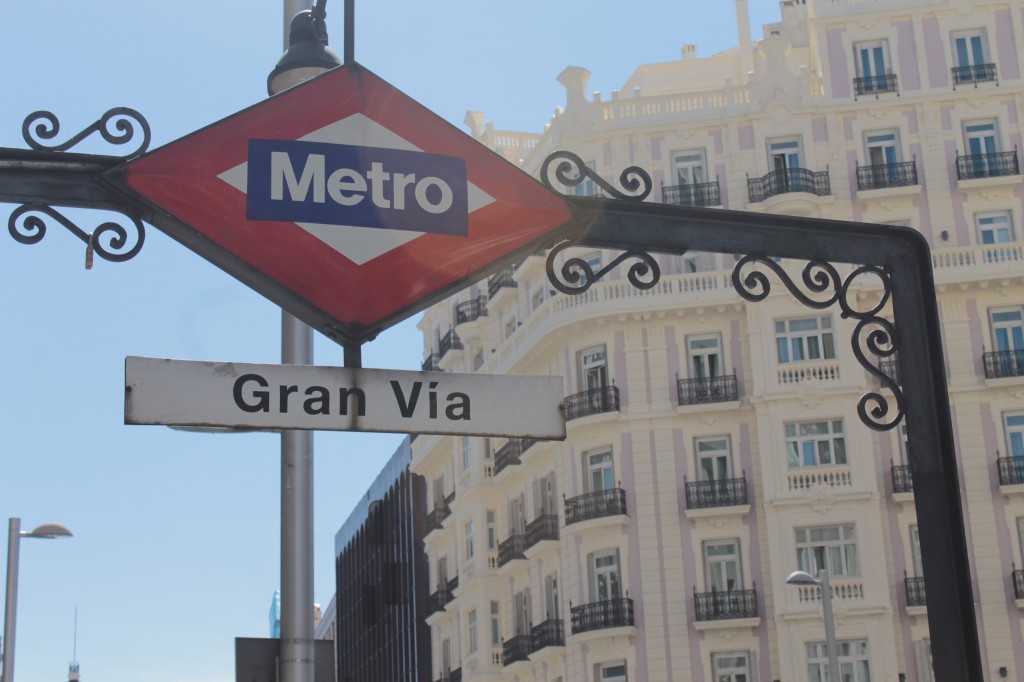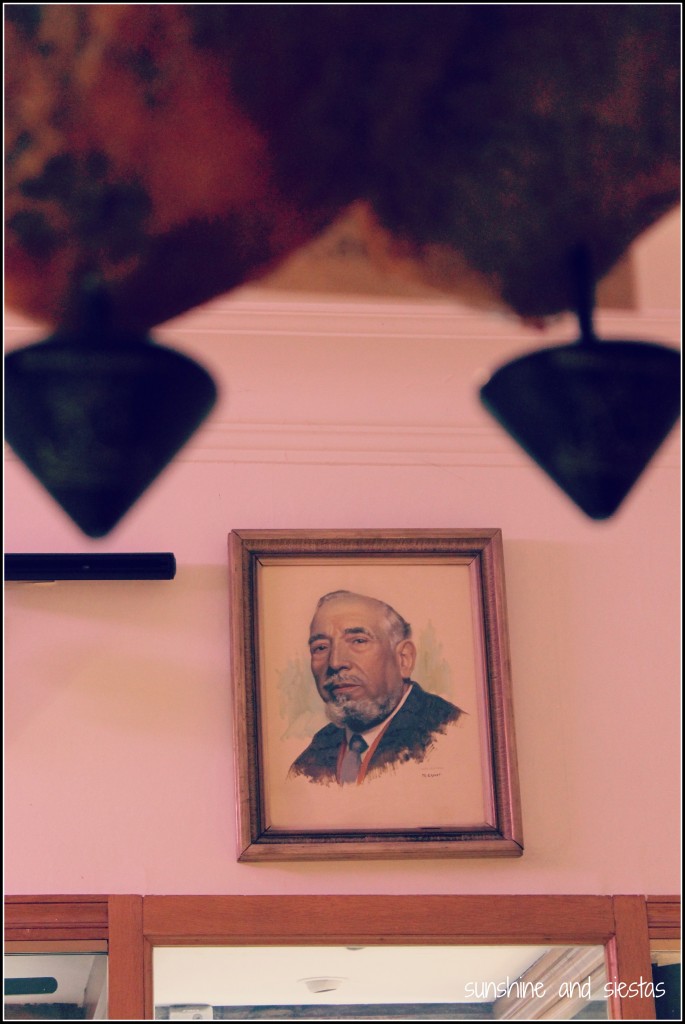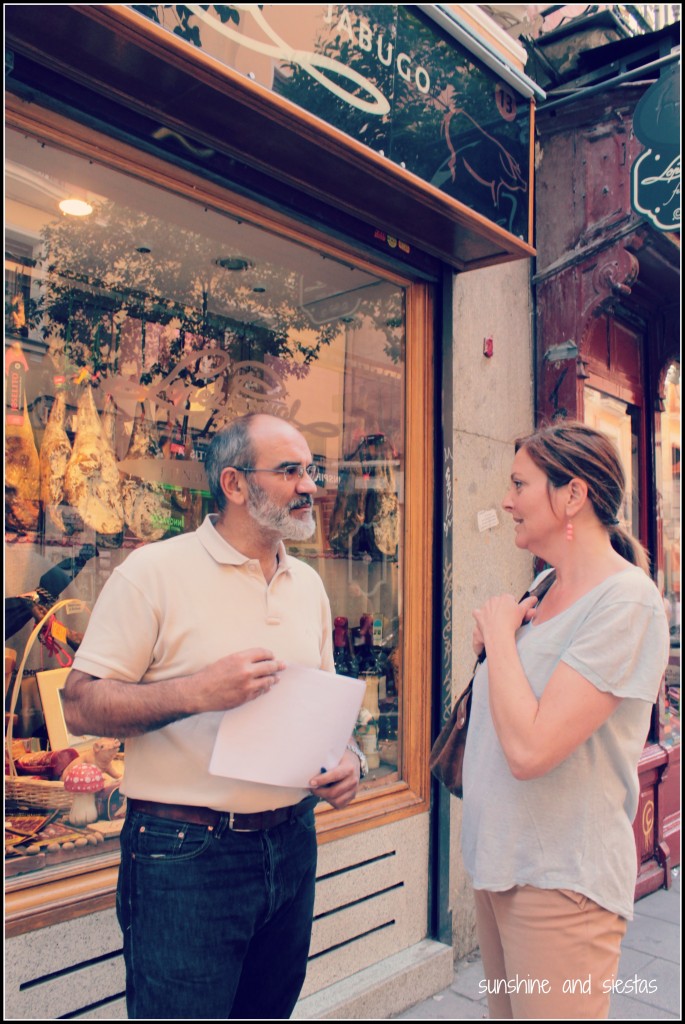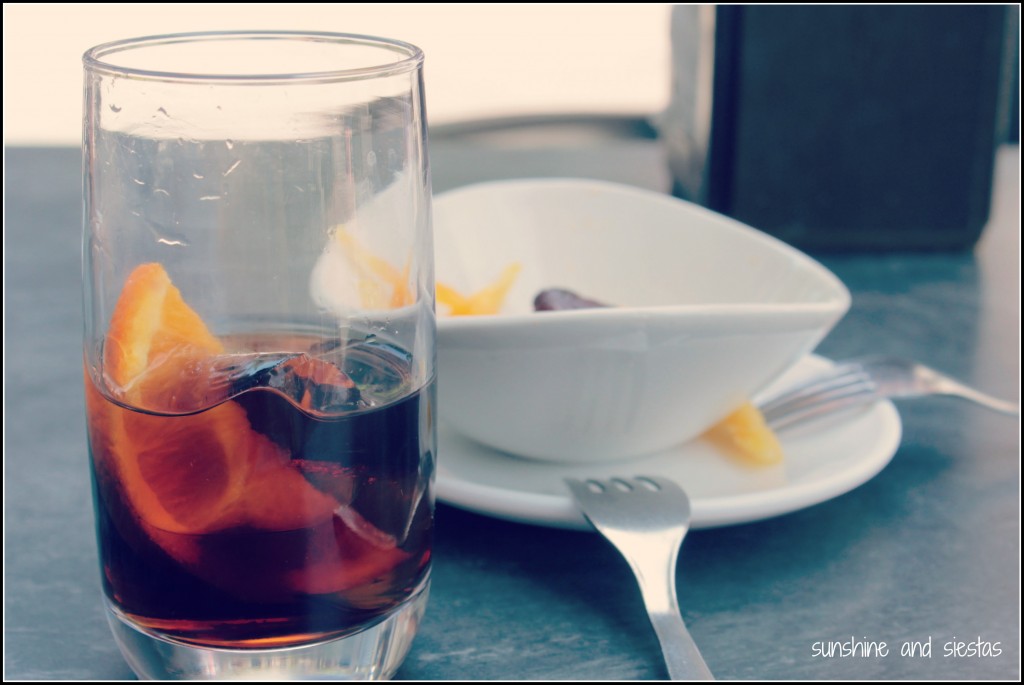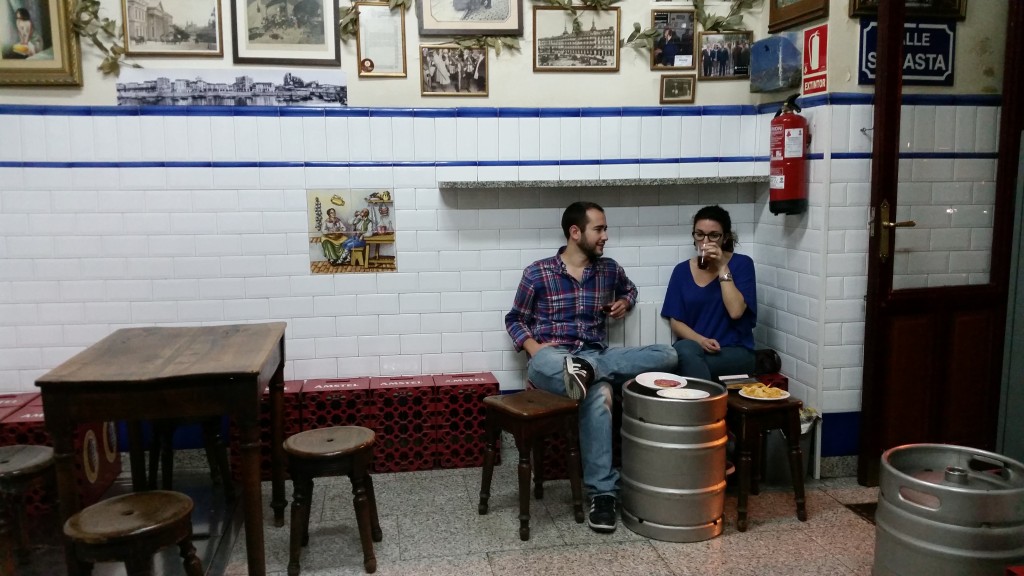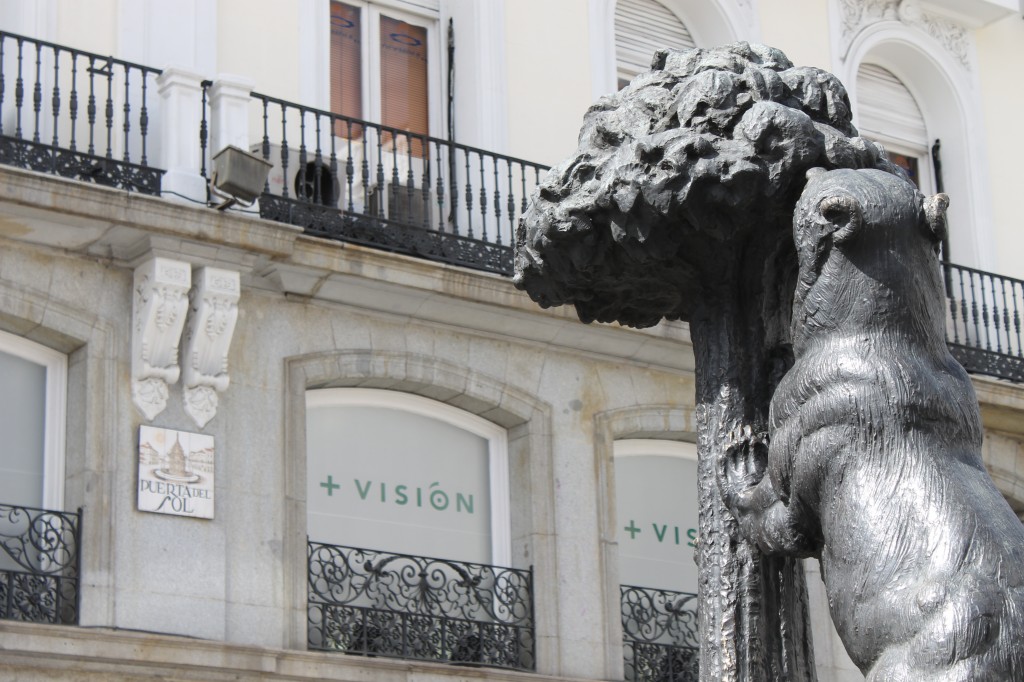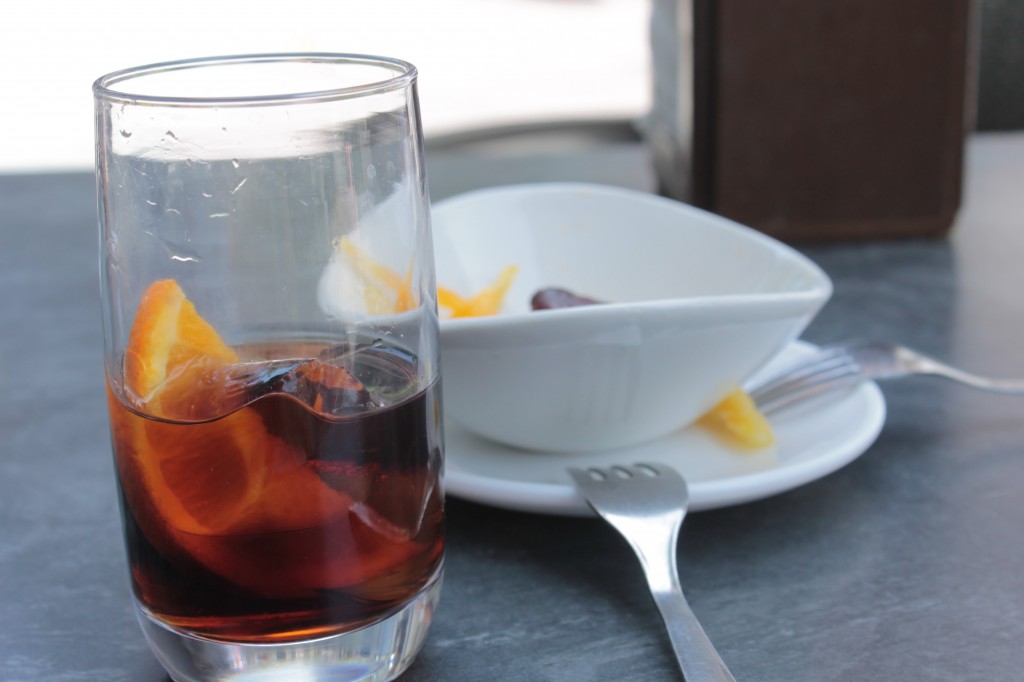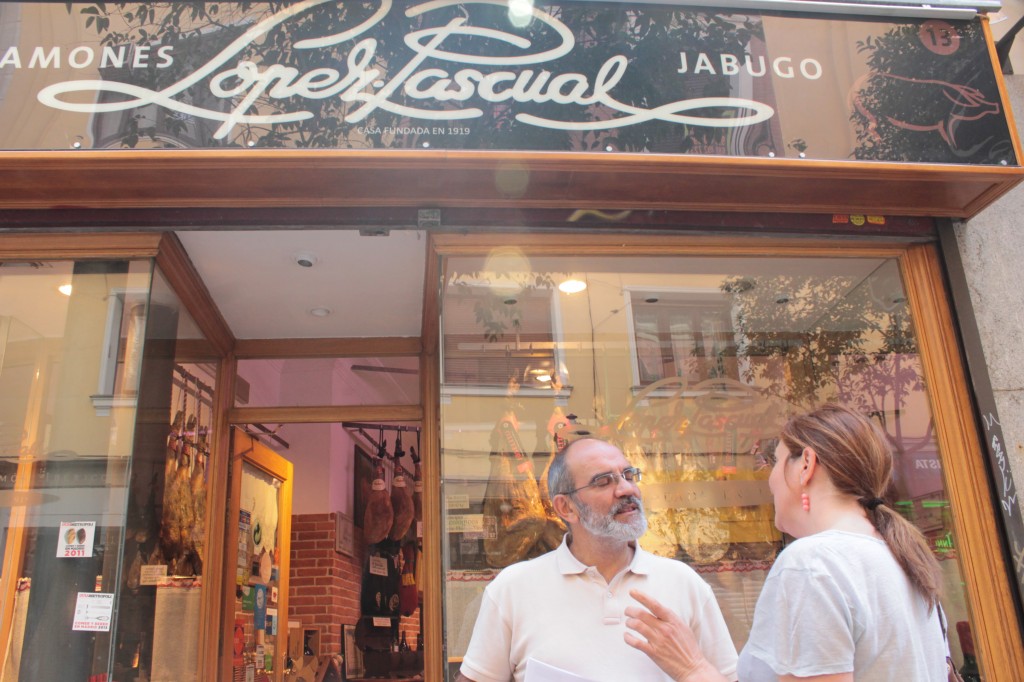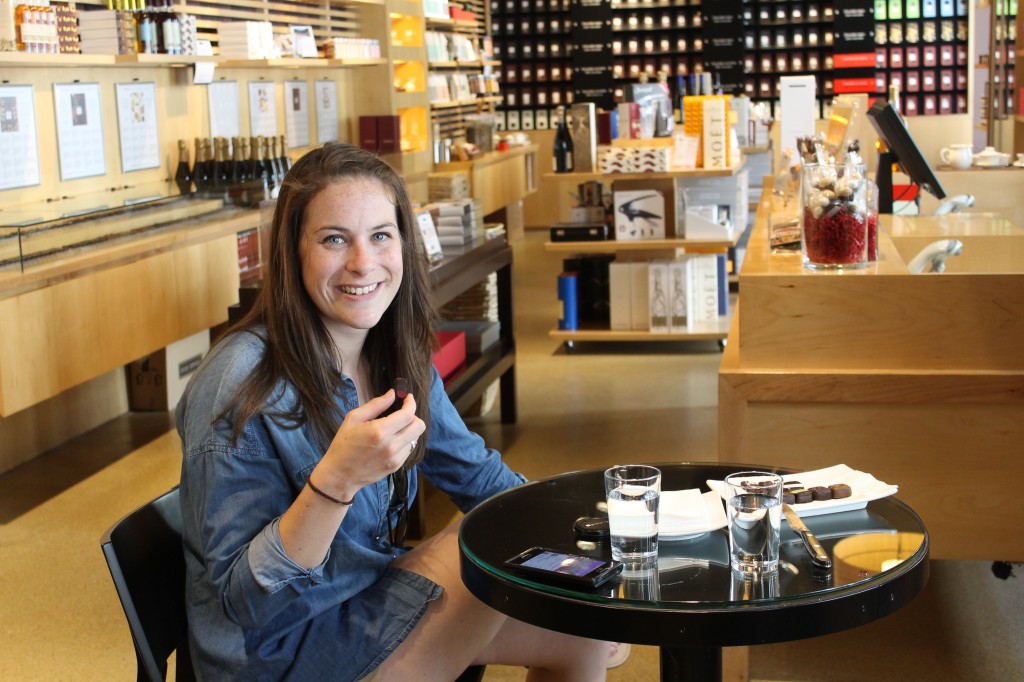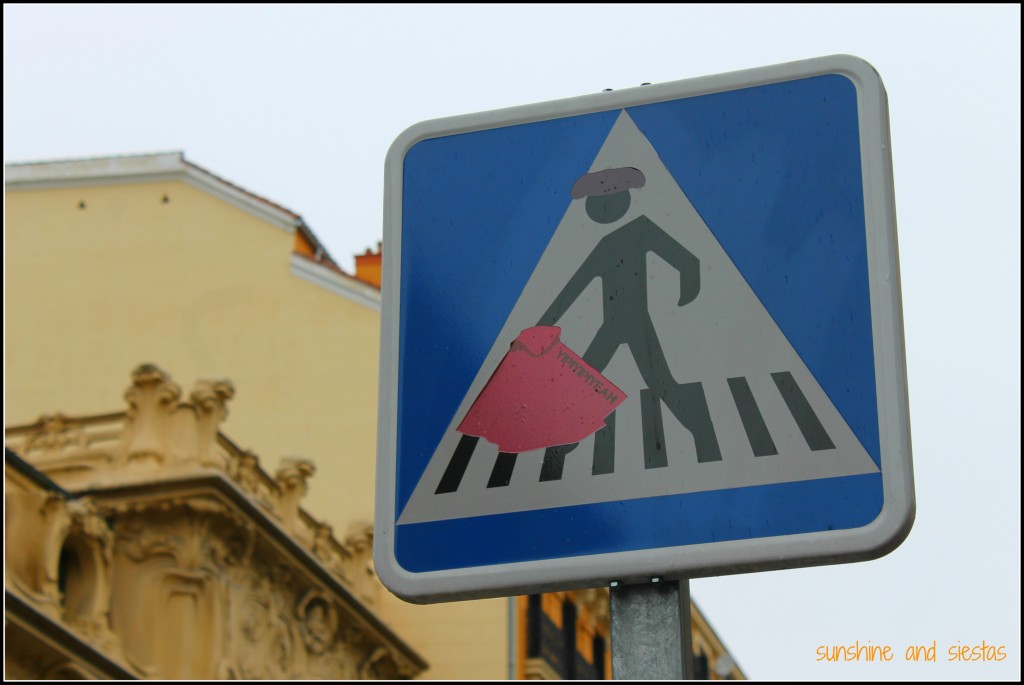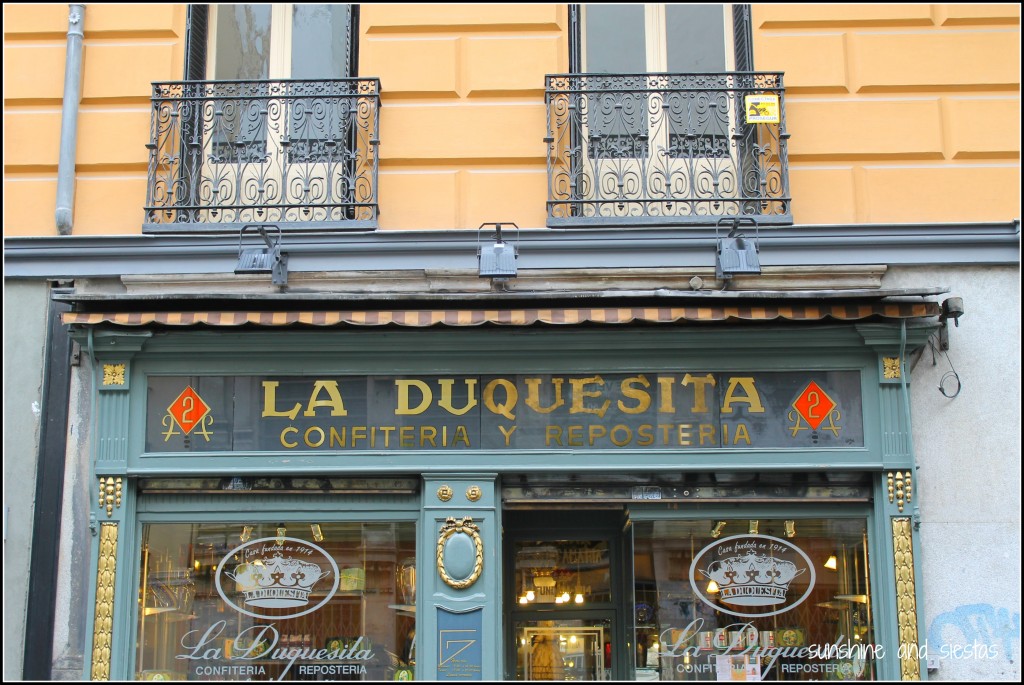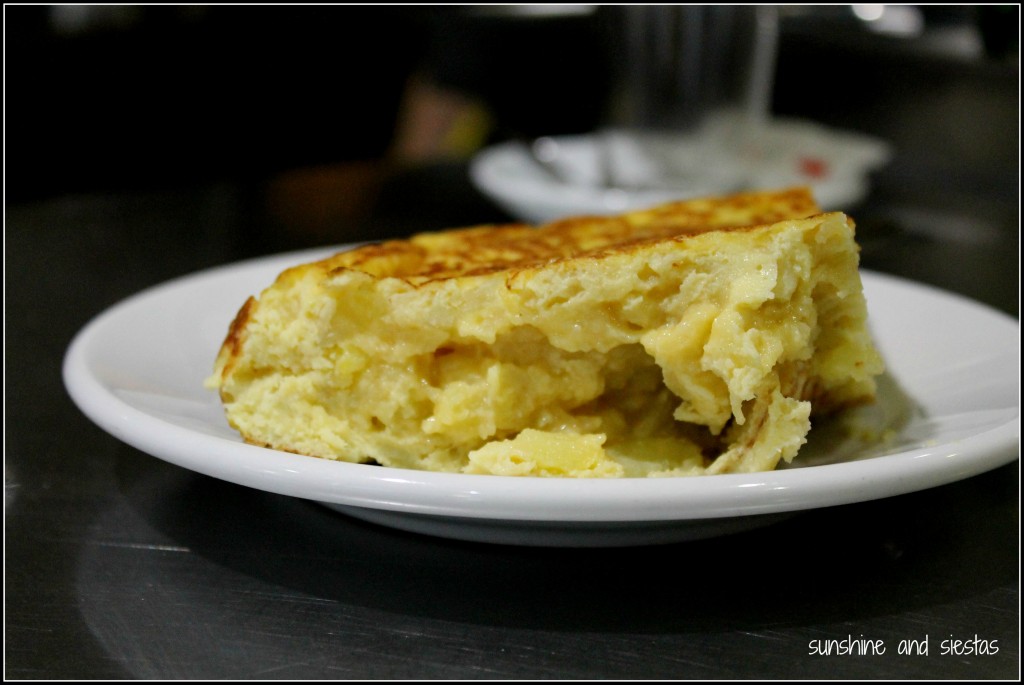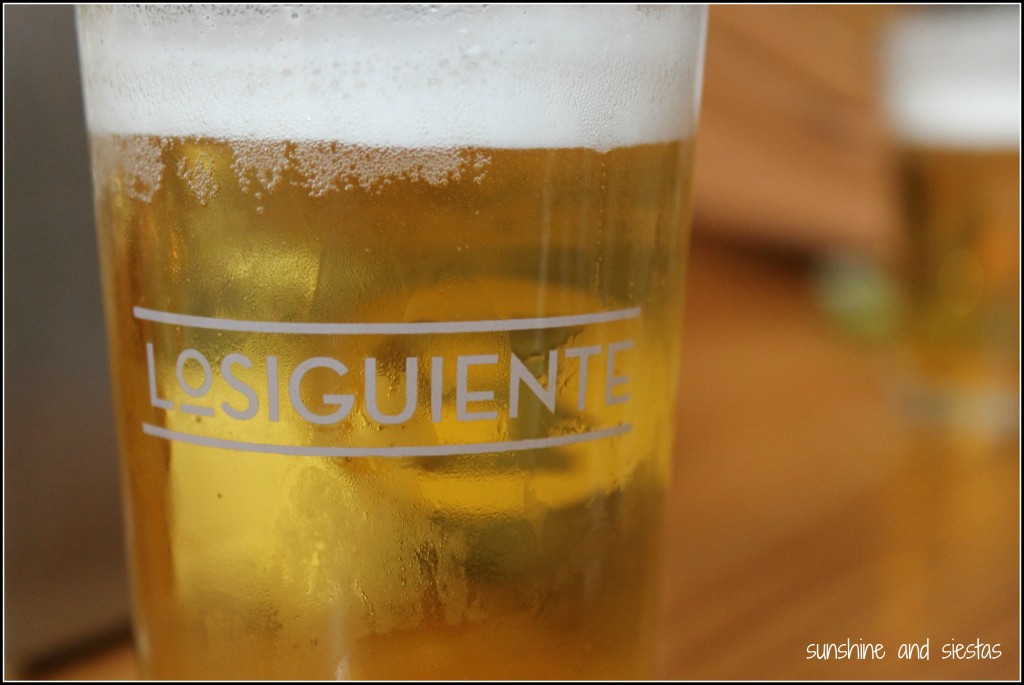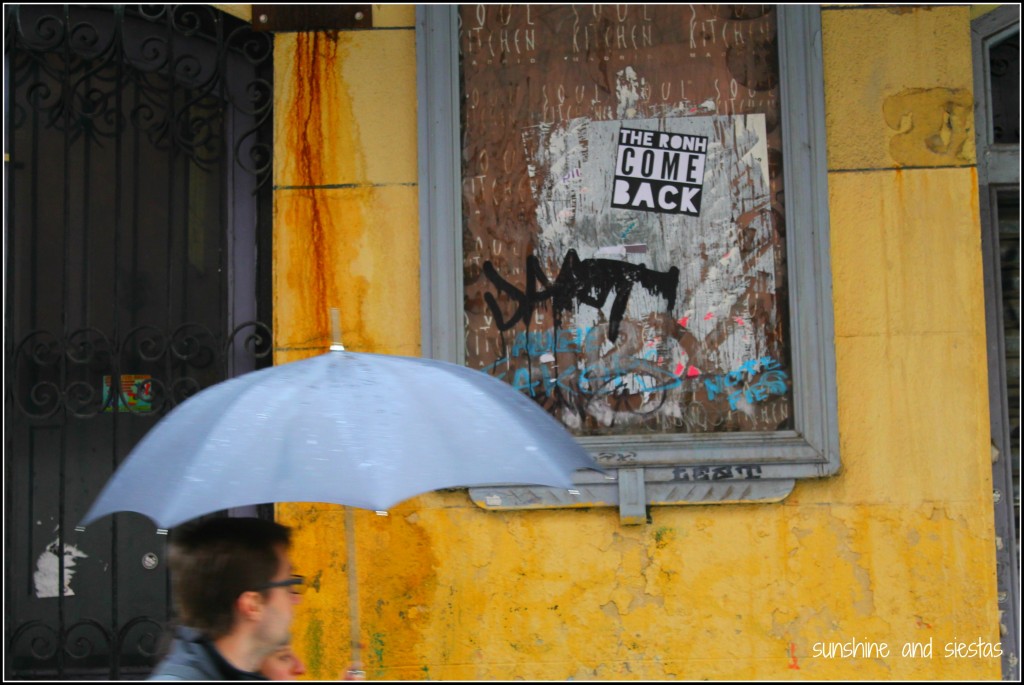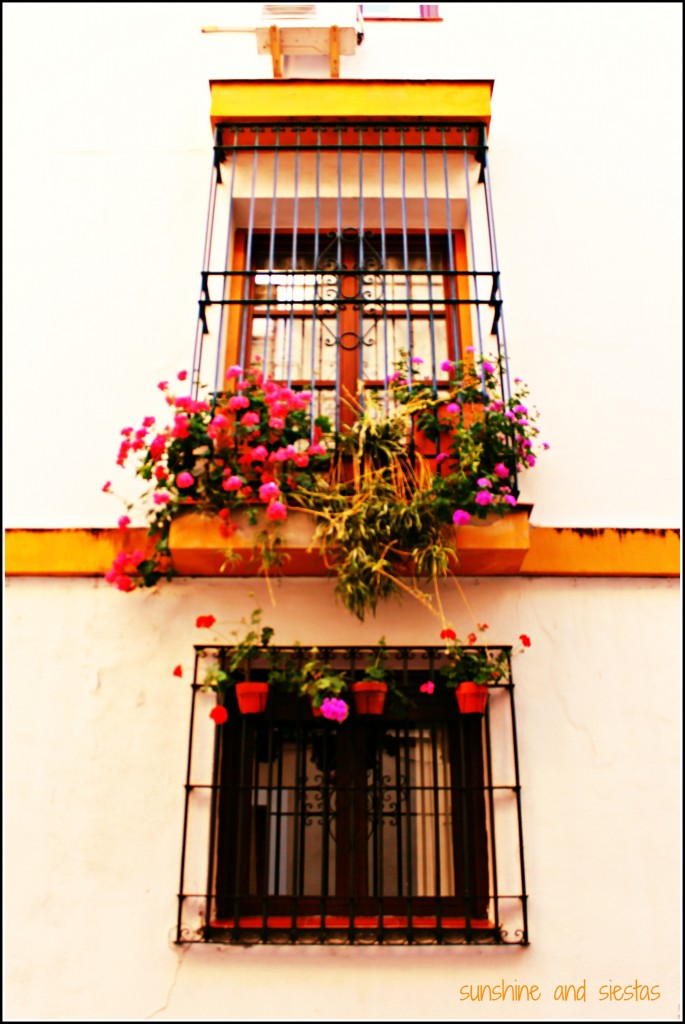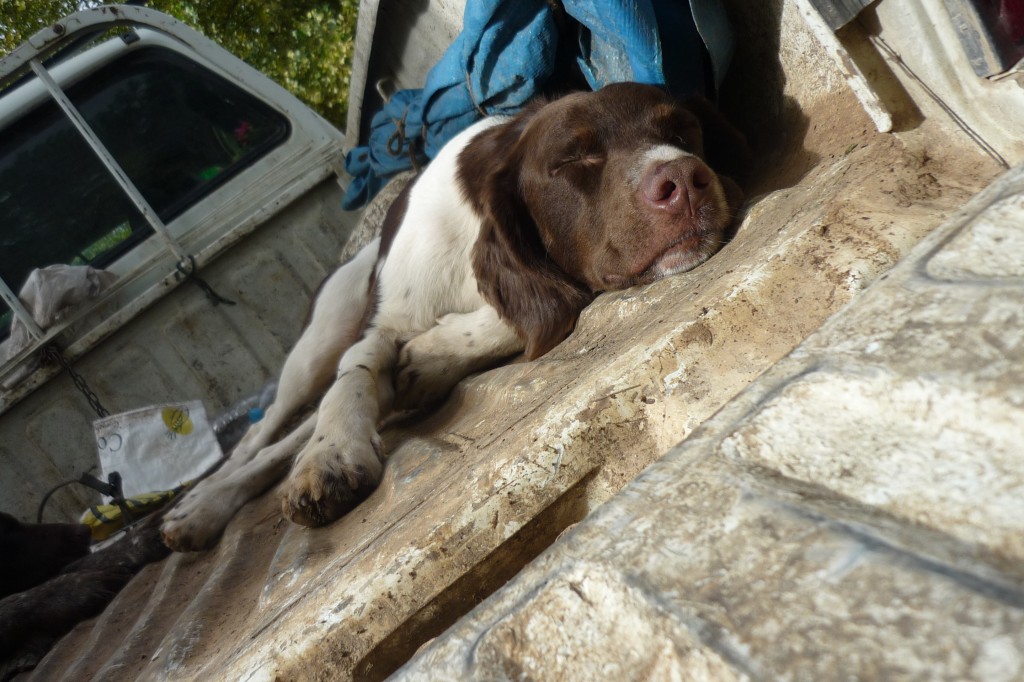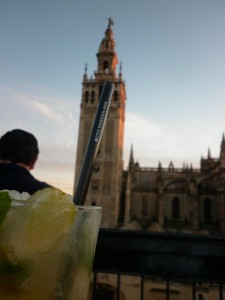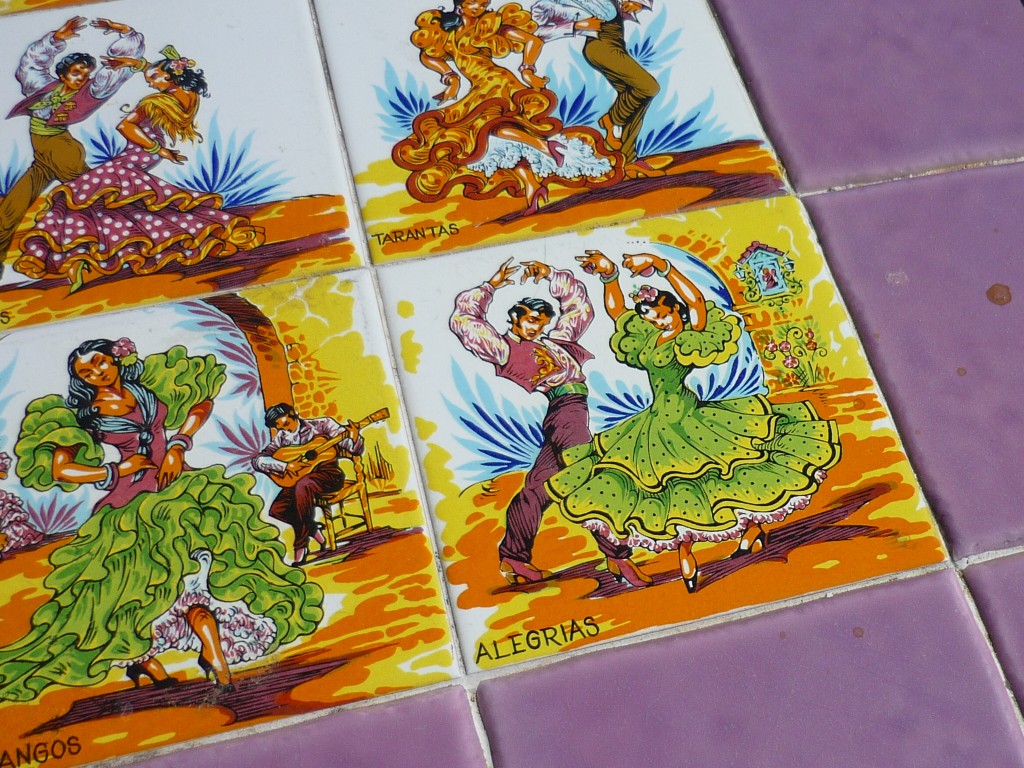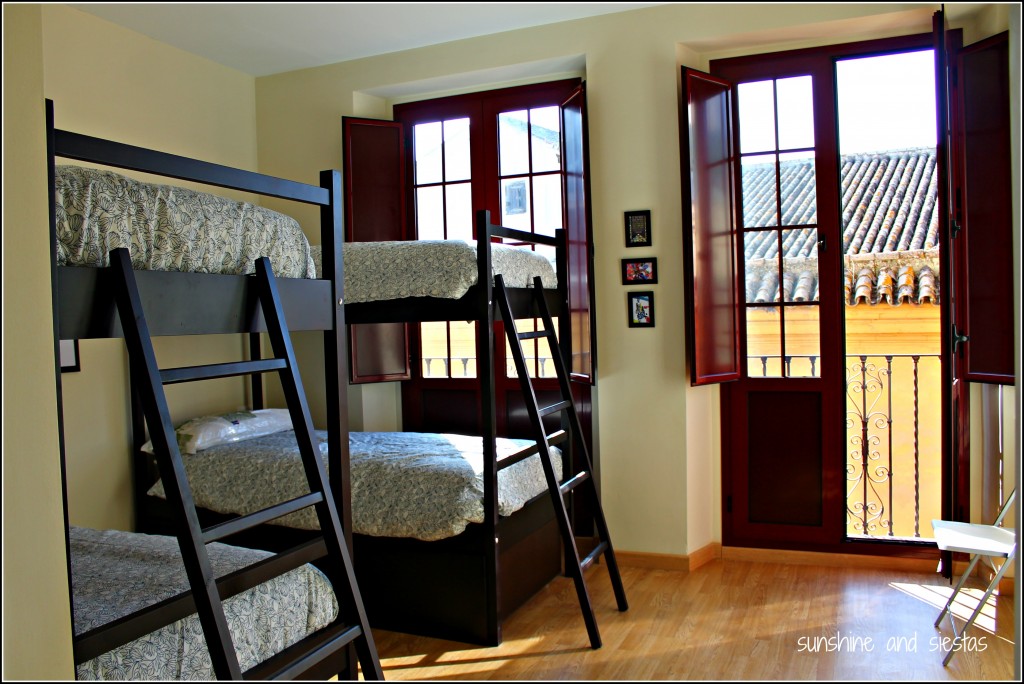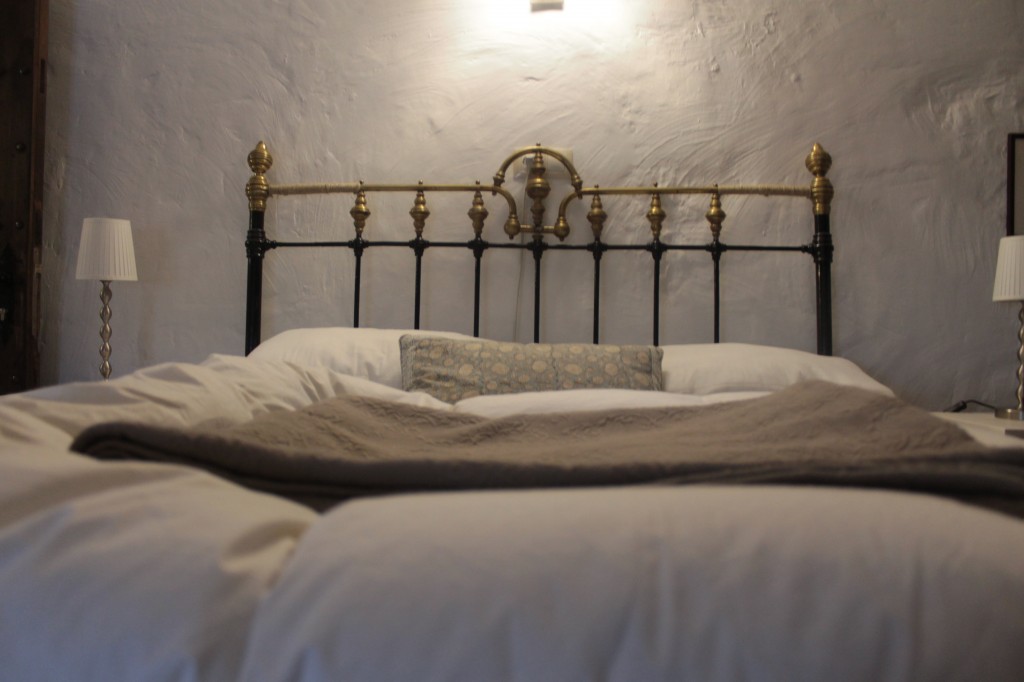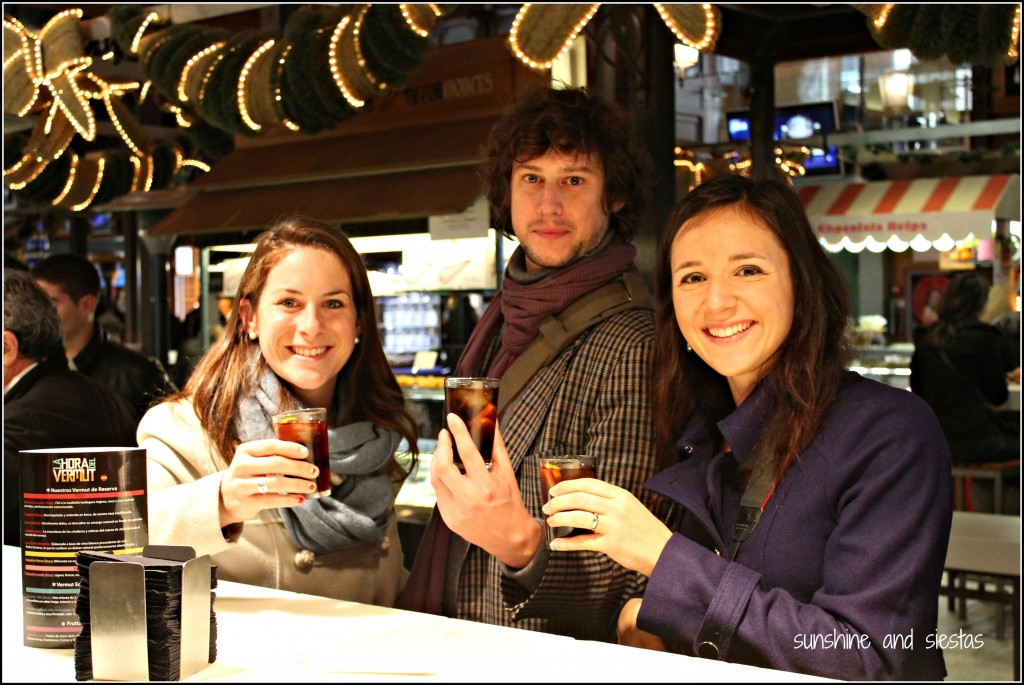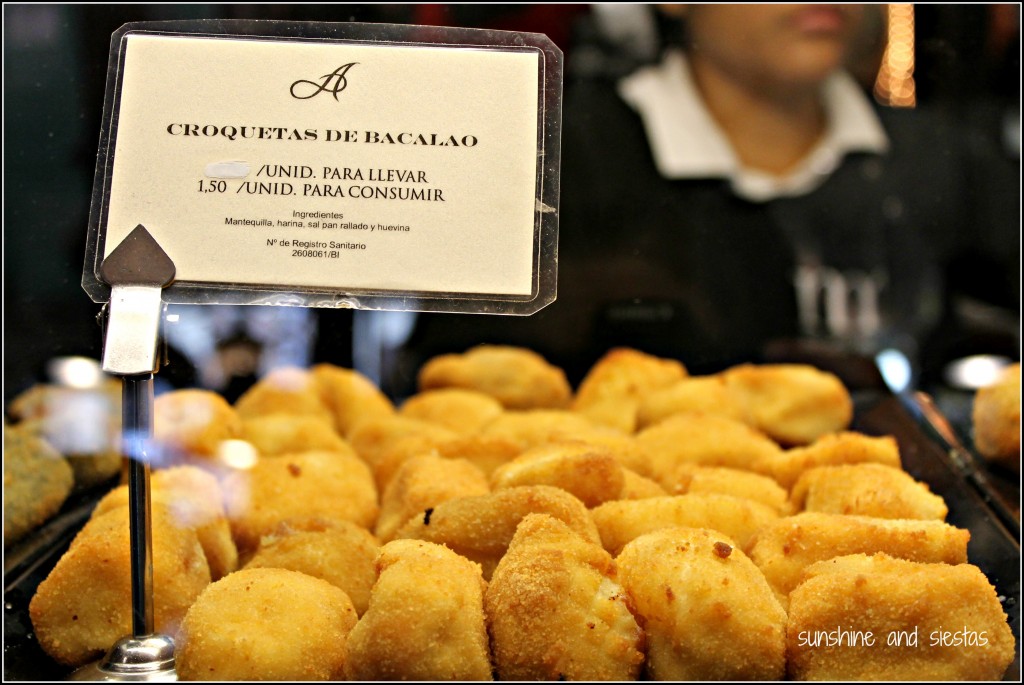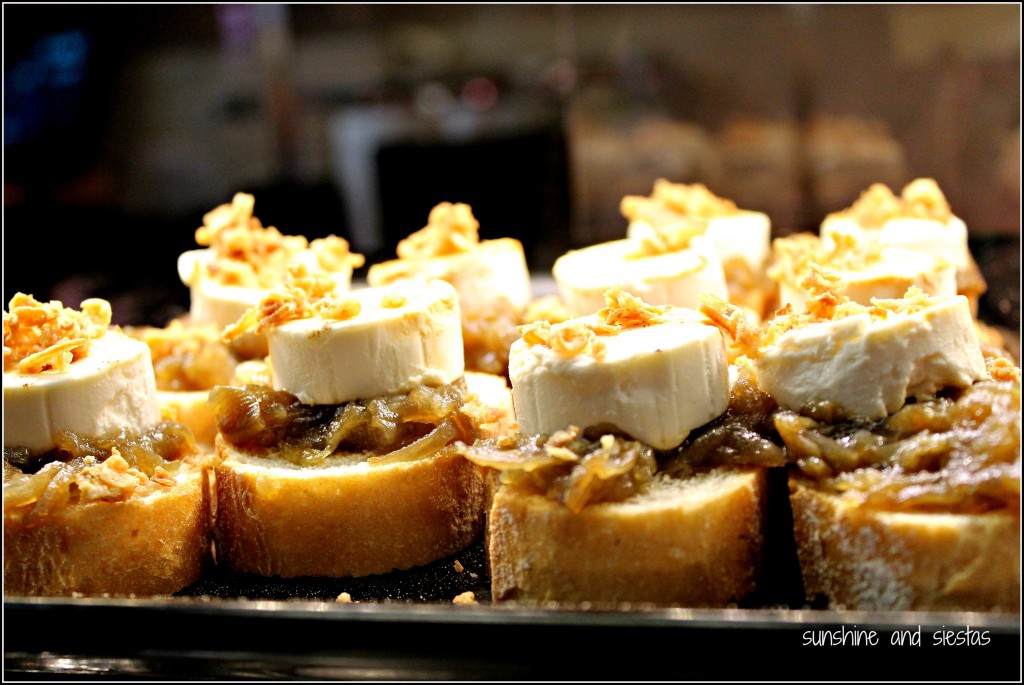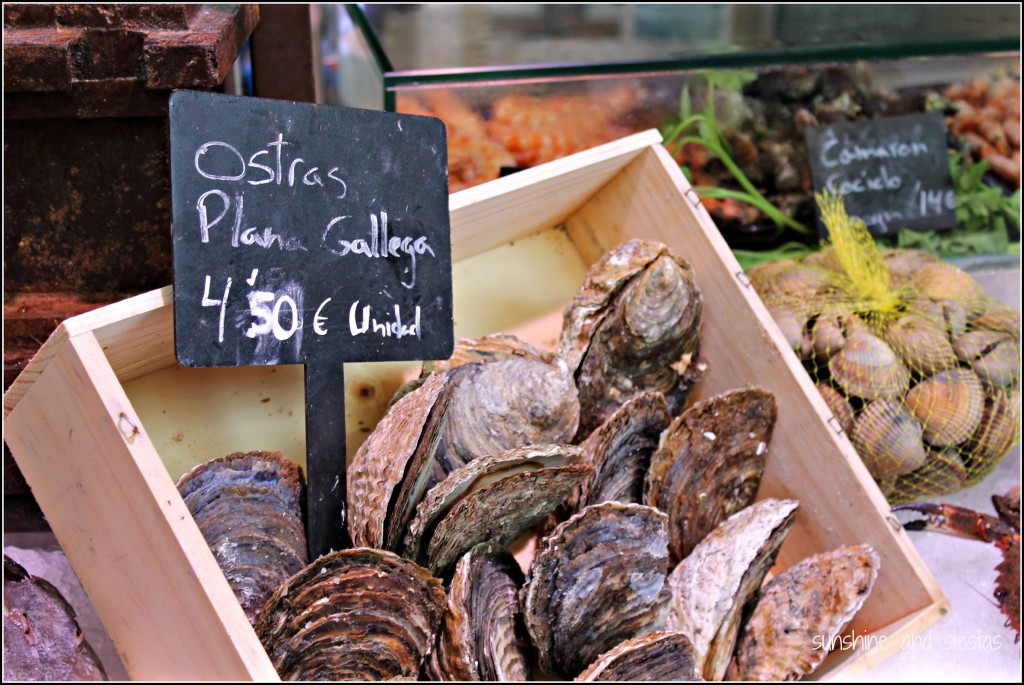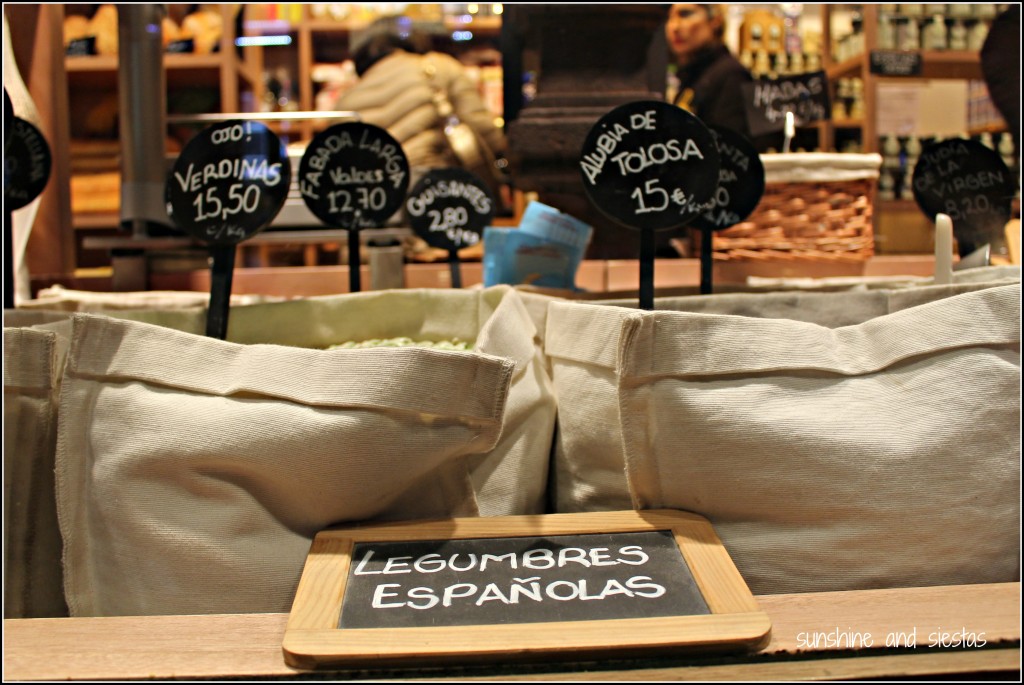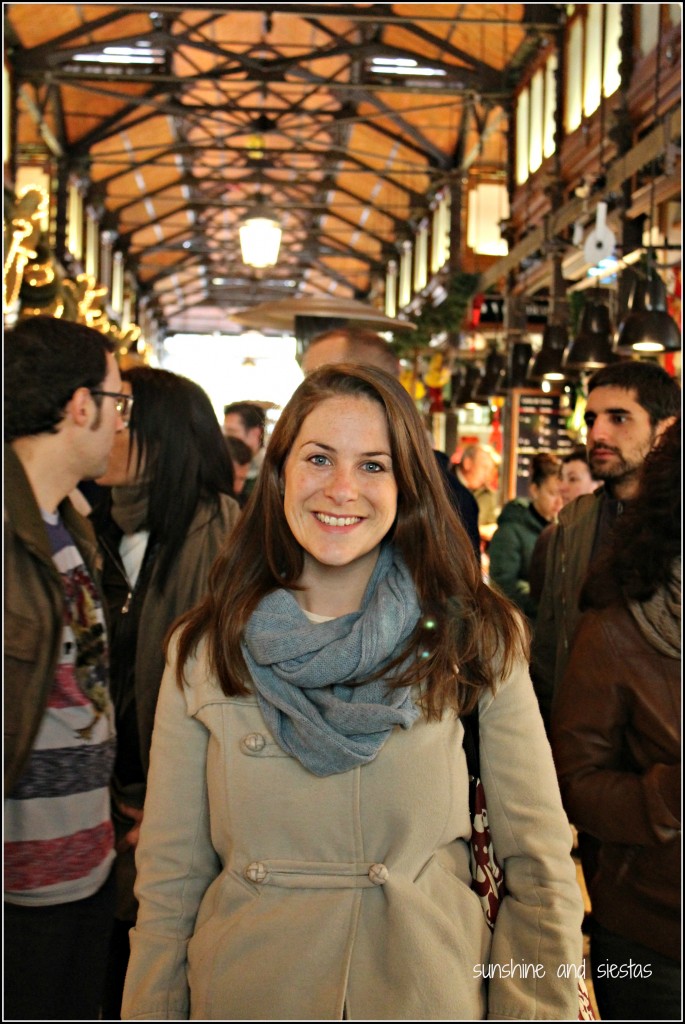The more immersed I become in the Spanish gastronomic world, the more interest I have in where food comes from, who makes it (or butchers it or cures it or raises it) and the stories behind everything I consume.
I recently spent the day with Joanna, the founders of Insiders Madrid. I was jet lagged, emotionally fraught from my grandfather’s death and not really sure what day it actually was.
Given the choice between many different types of tours, I chose the follow my nose and stomach on the Gourmet Food Shop Tour on a bright June morning. We met right on Gran Vía, the juxtaposition of old Madrid and shiny new Madrid. Apart from snacking at four stops along the way, I was able to meet the owners and operators of some of the most renowned food shops in Spain’s capital.
Joanna has traveled extensively and worked in television for years before deciding to follow her passion: to provide luxury and off-beat tours to people from around the world. Between samples of Spanish foods like ham and olive oil, we shared stories about dining and drinking in Spain.
Our first stop in Malasaña was at Madrid’s oldest charcuterie. A photo of owner Antonio’s grandfather – the shop’s founder – hung above the door.
I had mentioned to Joanna that the Novio’s family raises livestock and produces ham, and she quipped, “What could I possibly tell you about ham that I don’t already know?”
The truth is, plenty.
Antonio explained the way that feed and climate can affect the taste of the ham, mixing in family anecdotes from nearly a century of holding down the shop in an area of town that has seen major gentrification in the last few years. Antonio’s shop sidles up to hip boutiques and art galleries that double as watering holes.
We snacked on freshly cut ham and picos and artisanal beers brewed just around the corner.
At the nearby church of San Antonio de los Alemanes, a priest gave us permission to look around in the oval-shaped chapel that has been dubbed Spain’s very own Sistene Chapel. He excused himself to tend to business down a spiral staircase as Joanna paid a small donation. After the financial crisis hit Spain, the priests at San Antonio opened a soup kitchen, called a comedor social, downstairs to serve those affected by unemployment and wage freezes. The money we paid for an entrance went right to feeding the needy.
My jet lag must have been noticeable, as Joanna suggested we go for a coffee at one of Madrid’s most prolific cafeterías, Café Comercial. The age-old, mirrored cafe was calm in the break between breakfast and lunch, but I chose a vermouth over a coffee, convinced I’d crash after so many coffees.
The establishment is run by Fernando, a young restaurateur who has been in the food service industry for two decades, and who invited me to breakfast the next morning. Joanna says the café doubles as her office – she meets clients and food providers here over a coffee or vermouth.
As we chatted over fresh orange juice and enormous toasts, Fernando pointed out the bar staff. Most had been working for Comercial for well over ten years and could speak of the evolution of a well-known establishment whose clientele de toda la vida had come and gone. Fernando told me about clients who had been around forever, eating the same dish and sitting in the same chair for ages.
Fernando is working to breathe new life into an old place by adding vermouth tastings, language exchanges and theatre performances.
Racing the clock, we sampled olive oils from beyond Andalucía before ending on a sweet note: a chocolate tasting at a renowned chocolate bar. Joanna chose six or eight different flavors, each of which had been blended with cocoa beans to form outages flavors with hints of spice, cheese and fruit.
As we closed the tour with a quick caña after the sugar rush, we got to talking like old friends about our shared passions: food, drink and Spain.
Joanna and Seth of Insider’s Madrid graciously invited me on their Gourmet Food Shop tour, but all opinions are my own. The tour lasts approximately three hours at the cost of 65€ per head, which includes all tastings. Purchases at the stop are at your own cost.
Love Spanish food? Check out my biweekly food feature, Tapa Thursdays!
